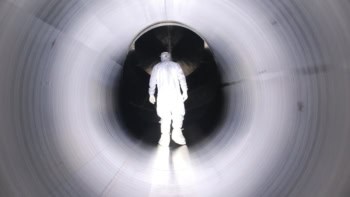
Don Geesman of Argonne National Laboratory is well-known not only for his work on quarks but also for serenading his audience with folk songs about underground neutrino detectors (“For it’s dark as a dungeon and damp as the dew/where neutrinos come slowly and the funding does too”). Although we were not so fortunate to experience any music at his symposium this afternoon, I did manage to corner the maestro afterwards for a quick chat about the ties between nuclear physics and astrophysics.
Geesman said that most of the crossover between the two disciplines occurs when studying explosive events such as supernovae and novae. Because such events occur on rapid timescales, they can be greatly affected by the physics of nuclear isotopes that have a very short lifetime themselves — ones that can only be glimpsed in facilities such as Argonne’s ATLAS accelerator. A lot of the experiments at ATLAS seek to understand how the nature of these short-lived isotopes changes when they are at the sort of high temperatures found in supernovae.
Why is this important? Thermonuclear, “Type Ia” supernovae have for a long time been considered the “standard candles” of the cosmos because their brightness is so consistent. It was using these standard candles as distance markers that, in 1998, physicists were led to conclude that the expansion of the universe is accelerating, and therefore that there must be some kind of all-pervasive “dark energy”. But recent observations have led astrophysicists to suspect that standard candles might not be so standard after all. Geesman explained that a better understanding of short-lived isotopes will give astrophysicists a solid theoretical basis to tell how reliable standard candles are.



